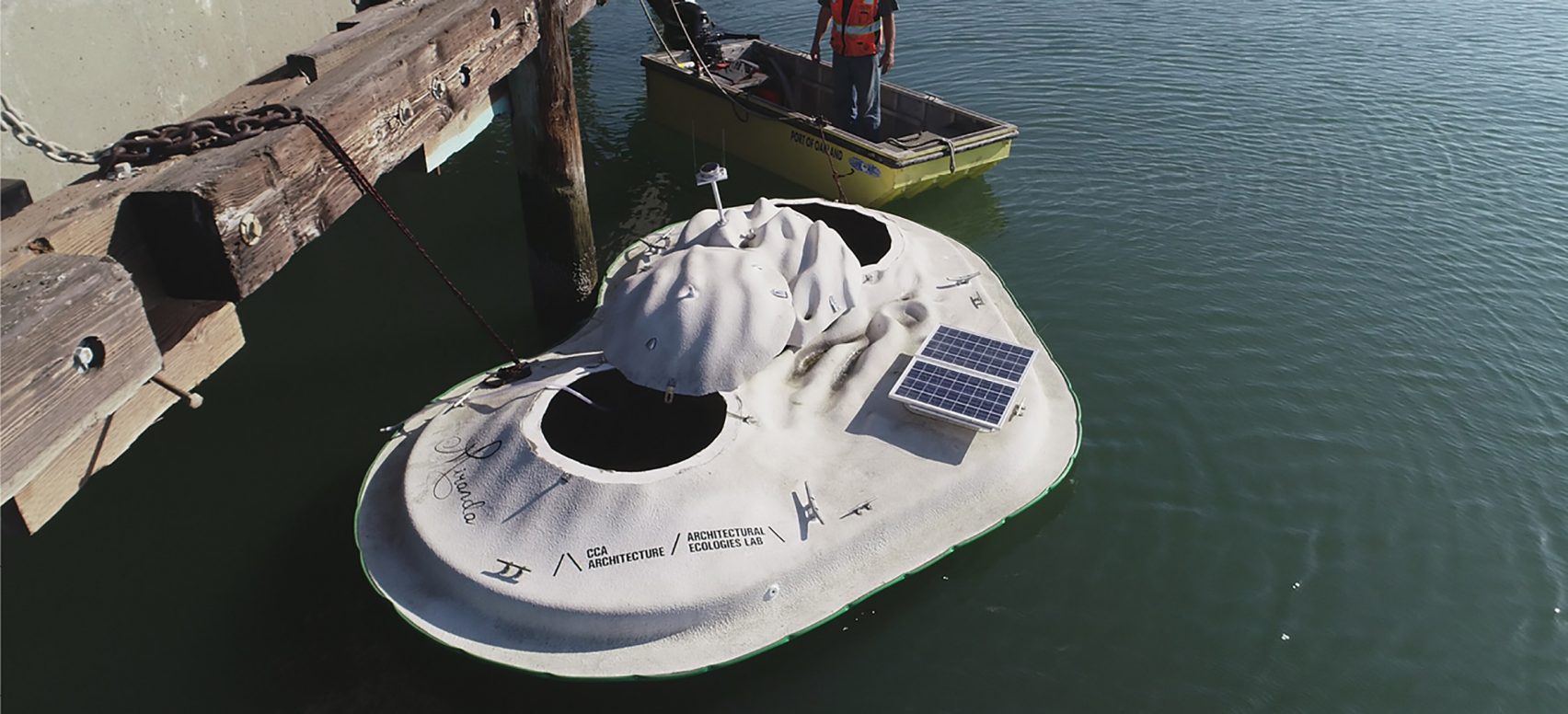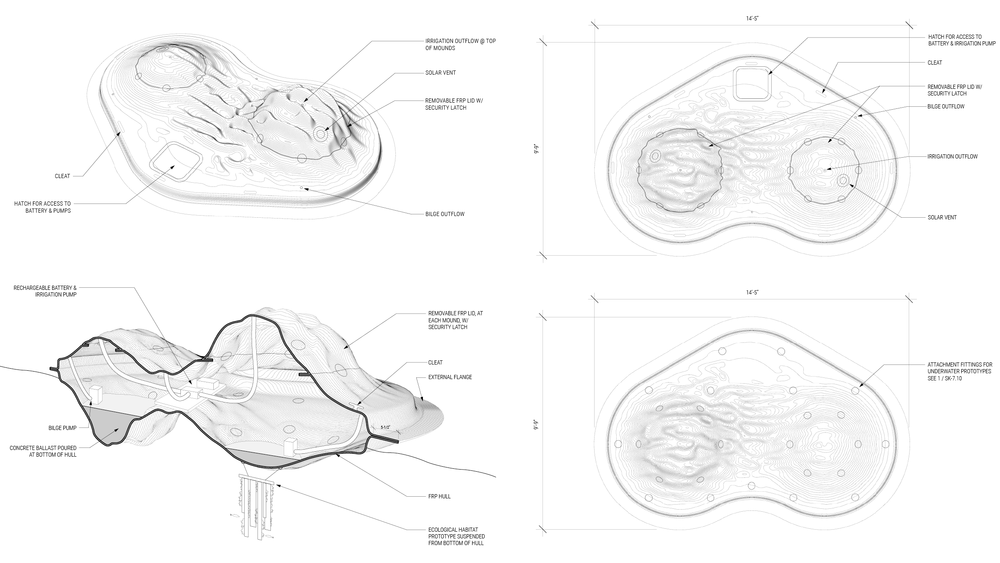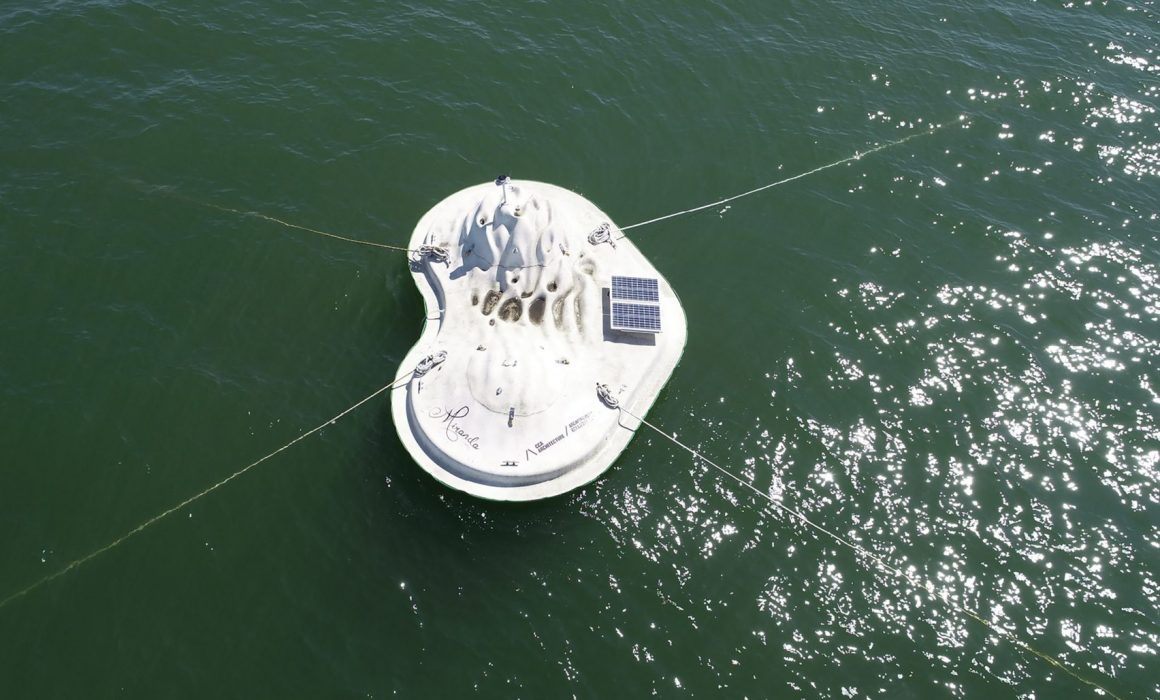Frangiflutti intelligenti — Smart breakwater


Si chiama Float Lab ed è una piattaforma galleggiante ormeggiata nel Middle Harbor Shoreline Park di Oakland, progettata dal California College of Arts. Funziona come frangiflutti e la sua forma è stata pensata per soddisfare le diverse esigenze dell’habitat marino, per spugne, nudibranchi, crostacei, ostriche, cozze e ricci di mare. La parte superiore ha picchi e vallate, per la formazione di pozze di marea. La parte inferiore ha topografie diverse i diversi tipi di invertebrati (da un articolo in deezen.com).
FLOAT LAB, California College of Arts #deezen #ArtsArchitecturalEcologieslab
The Float Lab will test solutions for enhancing marine habitat and alleviating coastal erosion. The substrate is designed to create a range of scales of habitats for marine invertebrates, creating small pockets of space that protect smaller creatures from predators and this strengthens the food chain and increases biodiversity.In large masses, this biological growth can help attenuate wave action and reduce coastal erosion – one of the primary impacts of climate change and sea-level rise
Float Lab, formally called the Buoyant Ecologies Float Lab –moored in Oakland’s Middle Harbor Shoreline Park, is a structure serving as both a research platform and demonstration project. The structure was created by a team of artists, designers and architects from the California College of the Arts (CCA). The floating structure acts as a breakwater that helps block waves and make the water calmer. The Float Lab, a cutting-edge prototype for an ecologically productive floating breakwater, merges expertise from design, advanced digital manufacturing and marine ecology to imagine a new kind of architecture for climate adaptation.


